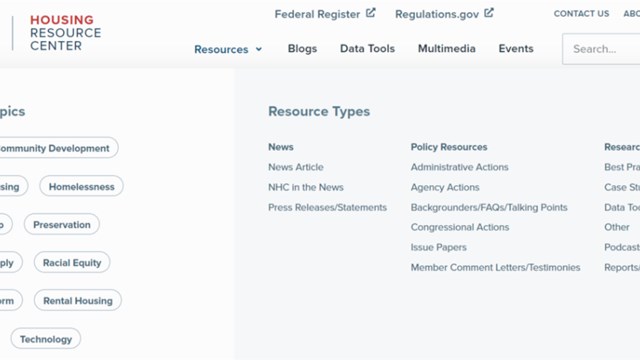At the heart of co-op and condo living is the association or corporation board, that unique self-governing body that directs the community and carries out its mission to uphold quality of life and preserve the investment of its members. Board service is almost universally voluntary, and does not require any specific experience. It’s a learn-on-the-job situation.
Given that, and given that board members have a fiduciary duty to their community, what kind of orientation or onboarding should boards offer to new members to help them understand the scope of their responsibilities and make sure they’re well equipped to fulfill them?
Welcome!
Andy Marks is a senior vice president with Maxwell-Kates Inc. and Associa Company, management firms based in New York City, and was also the president of his Manhattan co-op for many years. According to him, “When we have a new board member who is unfamiliar with what’s required of them, we first provide them with a basic overview of the following: We start with the difference in structure and status between a co-op (where owners are shareholders of the corporation) and a condominium (in which unit owners own real property, each with a proportionate share of the common interest). Although that is something they may already be familiar with, it helps ground them.
“Then we move on to basic roles and responsibilities of the board and each board member,” he continues. “Next, we introduce the specific issues currently being addressed, along with the short-term and long-term objectives of the board they are joining. This update will come from the board president and/or the property manager. Finally, we introduce the expectations and requirements of each member based upon how that particular board operates. This includes topics such as regular board meeting attendance, board committee memberships, participation in the budgeting process, capital projects, interviewing prospective shareholders (for co-ops), and the review of applications and board packages, etc.”
Dan Wollman, CEO of Gumley Haft, a management firm also based in Manhattan, says that while onboarding “is a very good idea, there is generally not a formal process. In fact, there isn’t any formal process in any of the buildings we manage.” That said, he does add that “one of the things we like to see is in buildings where there is a good level of involvement and people want to serve, the board takes on one or two volunteer, non-voting members each year. They participate in deliberations and debate, and when a seat opens on the board, they can step right in, because they’re familiar with building issues, etc. This is a great way to integrate new people into the governance of the building. As new members come on, we recommend they read the bylaws and documents, etc. and that they come to our offices to read the board minutes at least from the past several months to get up to speed.”
Resume, Anyone?
Considering that board service is voluntary, and nearly every community struggles to find residents willing to make the commitment to serve, what if any documentation and experience should be recommended—or even required—for new board members seeking a seat?
According to Marks, “To be considered by either the sitting board or by the shareholders or unit owners, anyone running for a seat or being considered for a mid-year appointment to the board should be required to provide their resume or bio in advance of the annual meeting. Each person should also be given the opportunity during the annual meeting to present their background and qualifications to the shareholders or unit owners in an open forum and explain how they will add value to the community, the board, and its work. This allows for the community to see how that individual communicates, their energy, and their enthusiasm for the impending task at hand.”
Wollman, by contrast, makes an important observation based on his own years of experience: “It’s not necessarily fair to vet board members,” he says. “It’s an open election, so the board can’t really vet the candidates, and in certain respects, that’s a good thing. Boards made up of people with divergent backgrounds are better boards. You don’t want a board made up only of attorneys or accountants. You want different types of representation within a building. If you live in a condo, and 20 percent of the units are rented, someone who rents out his or her unit should be on the board. It’s the same with families with children. You want them on the board as well. You want a diverse board, both in terms of make-up and skillset. You don’t want five lawyers or accountants—you want balance.”
Board Service 101
How common is it for a building or association to have a formal onboarding process for their board? “It varies widely,” says Marks. “Some buildings have a more prescribed way of onboarding new board members, while others—the vast majority in my experience—are less formal. I think it depends on how a particular board has done things in the past. When I first joined the board of my own co-op, there was no formal onboarding. I had to learn on the job, so to speak. When I became president, and we onboarded new board members, I took it upon myself to take the time to speak to all prospective board members in advance of the elections to get to know them, and then after elections to sit down and walk them through the issues the board was addressing, and what we would like to see from them.”
Marks goes on to explain that his approach was more a function of how he likes to do things personally than any formalized process. “I feel that it is important for them to fit into the group dynamic of the board and that they are in alignment with our goals and objectives for the community. As management professionals, we often make suggestions to the board. Ultimately, however, it is up to the board members to decide whether they would like to take the lead or whether they would like us as property managers to do so.”
Wollman likes the idea of onboarding, though says he doesn’t see it much. He recommends inviting board members-elect to sit in on a couple of meetings before they assume their new positions. Having them observe the board in action, he says, “is the best way to integrate them. You can read the text of the bylaws, house rules, etc., but those documents may not be the issues facing the board at that time. New board members need practical exposure to the building’s problems and issues—practical experience. The things that come before the board are more everyday issues not related to bylaws and so forth—perhaps a construction or local law issue, for example.”
Moving Forward
There are obvious benefits to adopting a formal onboarding or board orientation process. “Benefits include ensuring that the new board member is aligned with, and working in lockstep with, the rest of the board from day one,” says Marks. “At the same time, clear expectations are set at the outset regarding their expected level of involvement and the division of responsibilities.”
Another important factor in board success is an interpersonal chemistry that is hard to predict, points out Wollman. “It’s no secret that boards like to recommend new members for vacant board seats who they think they will work well with,” he says. “The board should be a collegial group. Overall boards must work well together and represent the interests of everyone in building.”
So while a formal onboarding process is not necessarily common, or even necessary, it’s smart policy. It’s of the utmost importance that new board members have a good grasp of the tasks ahead of them and the community to best serve both their own and the community’s interests.
A J Sidransky is a staff writer/reporter for CooperatorNews, and a published novelist. He can be reached at alan@yrinc.










Comments
Leave a Comment